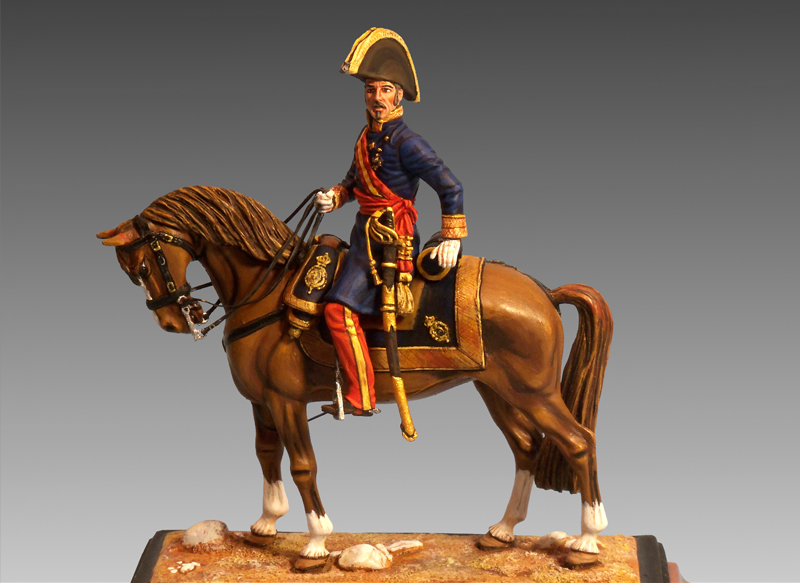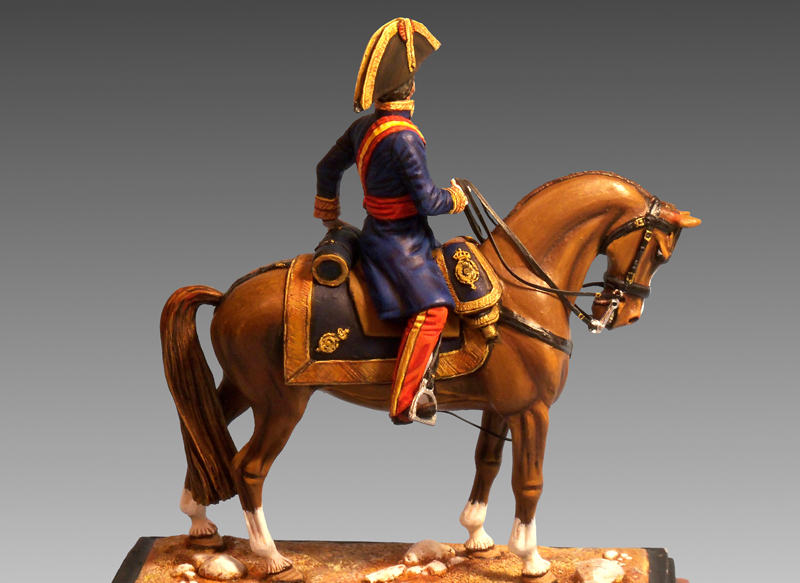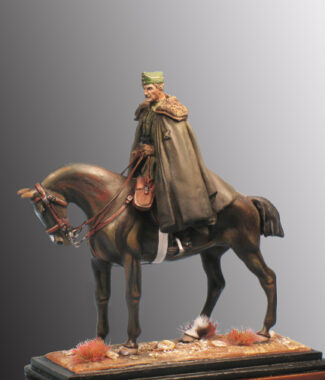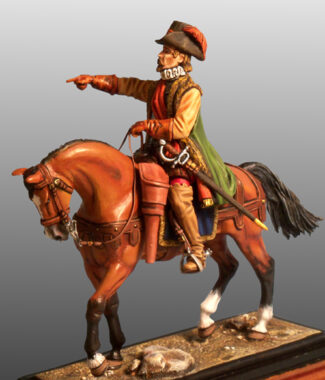It distinguished itself in the combats against the rebel faction, where he made the grade of brigadier. Both Espartero and the military under his command gained the nickname of ayacuchos during their stay in colonial territory, even if Espartero did not participate directly in the military action that ended in 1824 with Spanish colonial rule.
He returned to Spain in 1825, and at the outbreak of the first Carlist War he requested to fight the rebels supporters of pretender Carlos and moved with his regiment to Valencia. In January of 1834 he was appointed commander-in-chief of Vizcaya, thus initiating a stage of uninterrupted battles on the northern front, where he soon stood out in a series of fortunate military actions. Much has been said about the cruelty shown by Espartero in this war, both in reprisals against the enemy and in the punishment of his own troops. In the summer of 1836, he was both appointed head of the Army of the North, replacing General Fernández de Córdoba, and was also elected deputy for Logroño. From his new position he commanded the decisive battle of Luchana, which forced the supporters of pretender Carlos to raise the siege of Bilbao. This action earned him the title of Count of Luchana, to which he would unite, before ending the war, those of Duque de la Victoria and Duque de Morella. In 1839, and as a result of the negotiations with the Carlist sectors, led by general Maroto, he managed to sign the treaty of Vergara (August 29, 1839, ratified on August 31, 1839), which resulted in the pacification of the country, and dashed the hopes of the rebels of bringing back the absolute monarchy.
Espartero, highly decorated and seen as a national idol, turned to his political ambitions. The revolutionary events that began in July 1840 in Barcelona led him, after the resignation of María Cristina, to take on the regency. His performance as the regent was a succession of mistakes that led to the opposition of the parliamentary leaders advocating civil progress and consequently precipitated his fall. After this, Espartero had to take refuge in England until Narváez restored to him his titles and honors and allowed him to return to home soil. His return to Spanish politics came after the “Vicalvarada” and the revolution of July 1854, when Isabel 2nd entrusted him with the Presidency of the Council of Ministers, a position he held during the so-called Progressive Biennium. During his government the constituent assembly met, but the resulting Constitution, drawn up in 1856, never entered into force. After a crisis in July of that same year, Espartero resigned in favor of the minister of War, O'Donnell, who occupied the Presidency. Espartero later abandoned political prominence and retired to Logroño.
After the overthrow of Isabel II by the revolution of September 1868, a sector of progressives and Prim himself asked him to accept the crown of Spain, but he refused on the grounds of health reasons. The acclaimed King of Spain, Amadeo I de Savoy granted him the title of Prince of Vergara, and was granted the style of address of Royal Highness.
The figure shows Espartero in the pursuit of General Cabrera after the conquest of Morella in May 1840, after which Cabrera managed to flee to Catalonia with most of the remains of the Army of the North. Espartero is wearing a dark blue frock coat decorated with the Cross of San Hermenegildo, the laurel wreath crowned by the Grand Cross of San Fernando. He is also wearing the red and gold band awarded by war merits to generals-in-chief, a black cocked hat embroidered with a gold braid, trousers that were entirely red with a golden side chevron, and a crimson girdle with gold pins and tassels. The shabrack and holsters were dark blue with a gold braid. From the end of the War of Independence it was common to display on it the royal coat of arms embroidered in gold thread.








Reviews
There are no reviews yet.